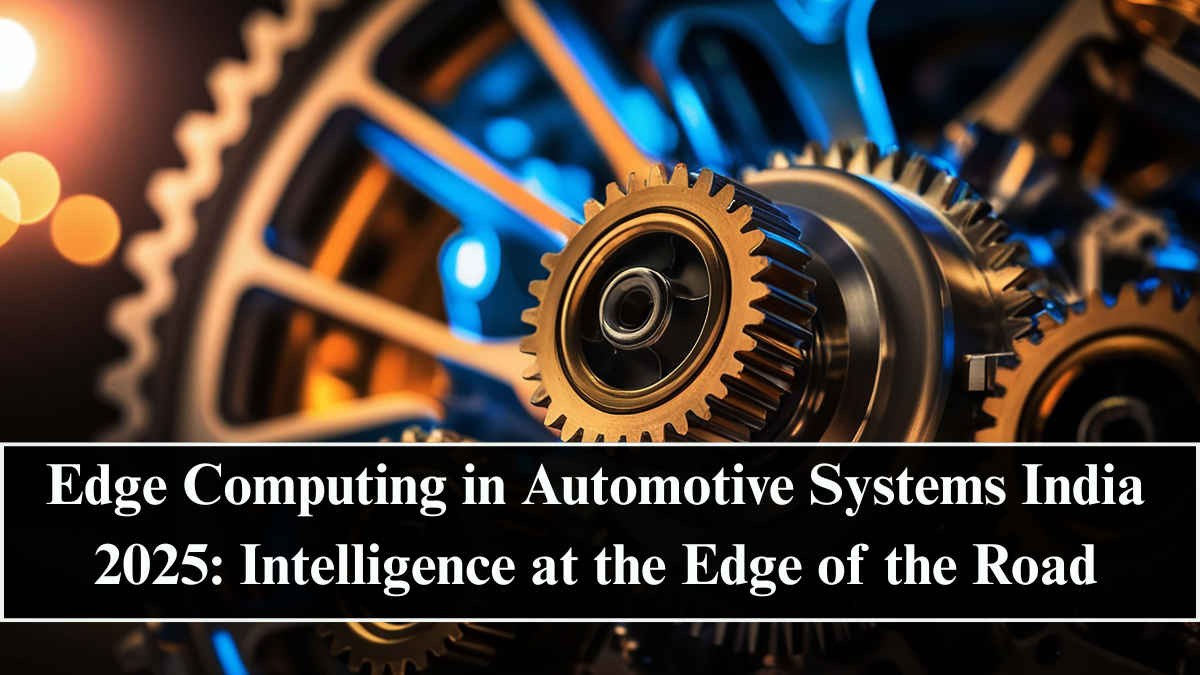As vehicles become more intelligent and data-driven, Edge Computing in Automotive Systems India 2025 is redefining how modern cars think and react. Instead of relying solely on cloud-based servers for processing, vehicles now perform critical computations directly “at the edge” — inside onboard computers and sensors.
This shift to edge computing is enabling faster decisions, lower latency, and enhanced safety — paving the way for autonomous driving, predictive maintenance, and real-time analytics in India’s automotive sector.

What Is Edge Computing in Cars?
Edge computing refers to processing data locally, closer to where it’s generated. In automotive systems, this means embedding computational intelligence into the vehicle’s Electronic Control Units (ECUs), sensors, and onboard processors.
For instance, instead of sending every sensor reading to the cloud, an edge-enabled car can instantly analyze video from cameras, radar, and LiDAR to detect pedestrians or road hazards within milliseconds. This ensures faster reactions — crucial in safety-critical scenarios.
Why Edge Computing Matters for India’s Automotive Future
India’s roads are unpredictable — dense traffic, varying infrastructure, and inconsistent connectivity make real-time decision-making essential. Cloud-only systems often suffer from network latency, which could delay safety responses.
By shifting intelligence to the vehicle level, edge computing eliminates reliance on continuous internet connectivity. Vehicles can continue operating smartly even in low-signal areas, making this technology ideal for Indian driving conditions.
It’s also a key enabler of:
-
ADAS (Advanced Driver Assistance Systems)
-
Autonomous navigation
-
Fleet analytics and telematics
-
Predictive vehicle maintenance
-
Over-the-air (OTA) updates and diagnostics
Integration of Edge and AI Technologies
In 2025, automakers are combining AI algorithms with edge processing chips to deliver smarter driving experiences. These chips, often developed by companies like Qualcomm, Nvidia, and NXP, enable vehicles to perform computer vision, object detection, and sensor fusion directly on-board.
For example, when a camera identifies a cyclist, AI at the edge instantly processes the frame and alerts the driver — without waiting for a cloud response. Similarly, adaptive cruise control systems rely on real-time edge processing to adjust speed and maintain safe distances automatically.
Indian automakers such as Tata Motors, Mahindra, and Maruti Suzuki are working with domestic and global tech partners to embed edge-enabled AI platforms in both passenger and commercial vehicles.
Role in Connected and Autonomous Vehicles
Edge computing forms the nervous system of connected vehicles. It allows continuous communication between car components and external networks while ensuring critical decisions are made locally.
When combined with 5G and V2X (Vehicle-to-Everything) communication, edge computing enables features such as:
-
Real-time traffic prediction and rerouting.
-
Collision avoidance and lane detection.
-
Instant data sharing between vehicles and road infrastructure.
-
Energy optimization in electric vehicles through adaptive power management.
This distributed computing model also reduces cloud dependency, cutting operational costs for automakers and improving data security by keeping sensitive information inside the car.
Security and Data Management
With more data being processed locally, cybersecurity becomes a top priority. Automotive edge systems in India are being designed with hardware-based encryption, trusted execution environments (TEE), and AI-powered intrusion detection to safeguard against hacking and data leaks.
Data governance is evolving, too. The government’s Automotive Cybersecurity Policy Framework (2025) mandates secure edge processing for safety-critical data, aligning with global ISO standards like ISO/SAE 21434.
The Road Ahead: Intelligent Mobility at the Edge
By 2025, India’s automotive industry is fully embracing edge intelligence as the backbone of next-generation mobility. As cars evolve into autonomous, connected, and software-defined platforms, edge computing will drive efficiency, sustainability, and safety across every vehicle type.
In the coming years, expect to see edge-enabled EVs that self-optimize battery performance, fleets that analyze routes in real time, and autonomous vehicles that learn from every kilometer traveled — all powered by intelligence at the edge of the road.
FAQs
What is edge computing in automotive systems?
It refers to processing data locally within the vehicle instead of relying on cloud servers, allowing faster and more efficient decision-making.
How does edge computing improve vehicle safety?
By analyzing data instantly on the vehicle, it reduces latency and ensures real-time responses to road conditions and hazards.
Which Indian companies are adopting edge technology in cars?
Tata Motors, Mahindra, and Maruti Suzuki are partnering with global tech firms like Qualcomm and Nvidia to integrate edge-enabled systems.
How does edge computing help electric vehicles?
It enhances energy management, optimizes charging, and improves predictive maintenance through on-board data processing.
What is the future of automotive edge computing in India?
It will power autonomous driving, smart fleets, and connected ecosystems, making cars safer, smarter, and more independent from the cloud.
Click here to know more.
